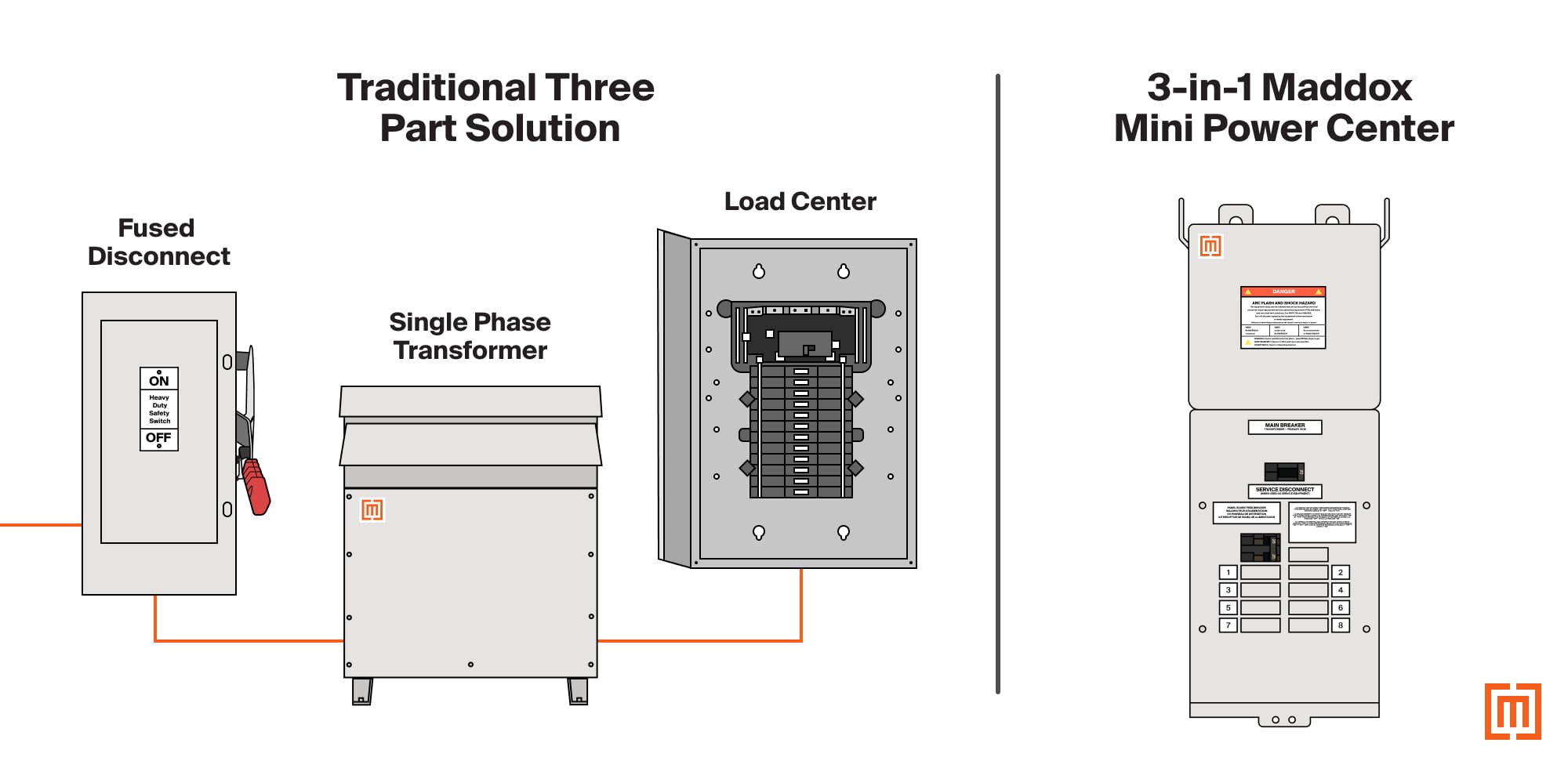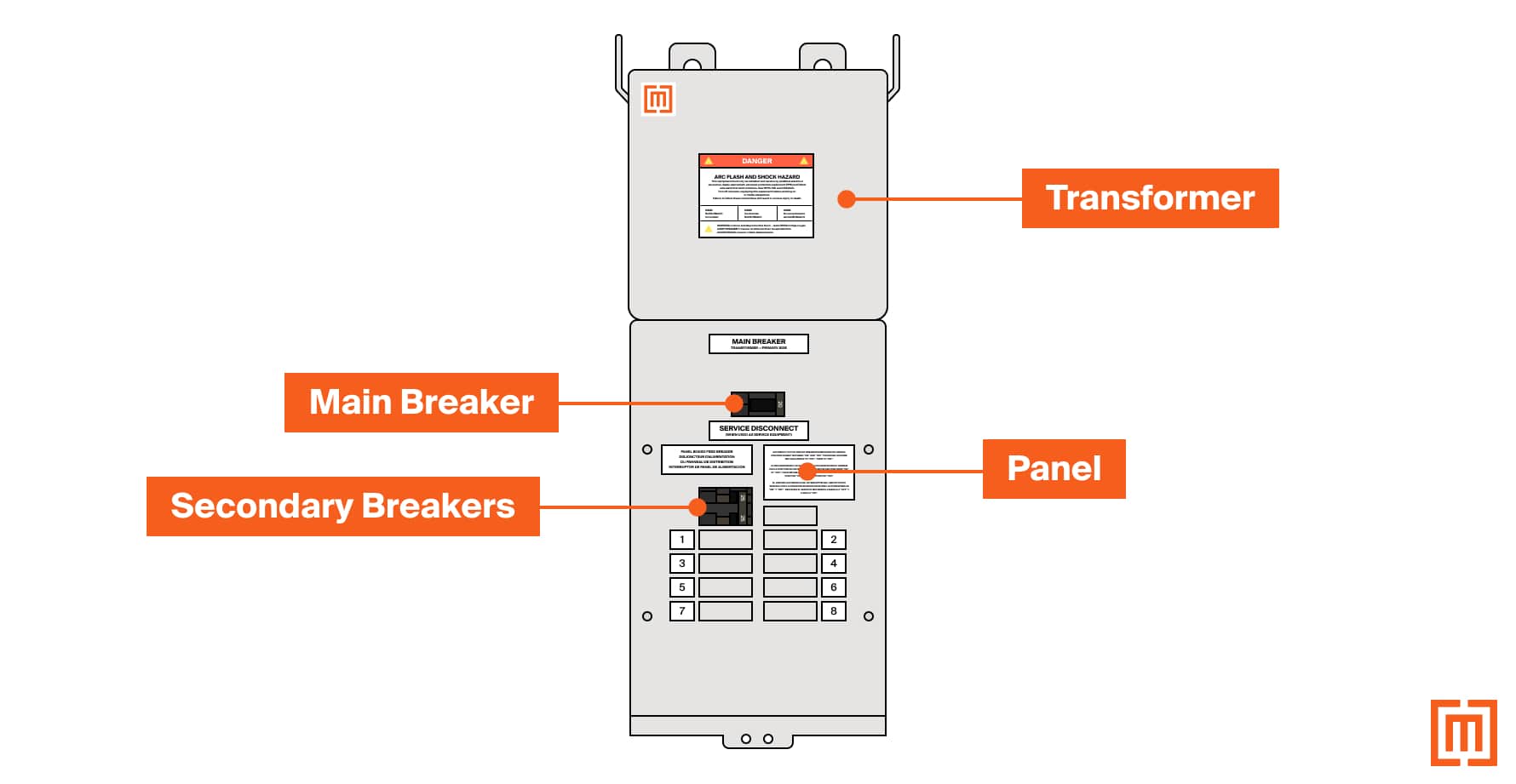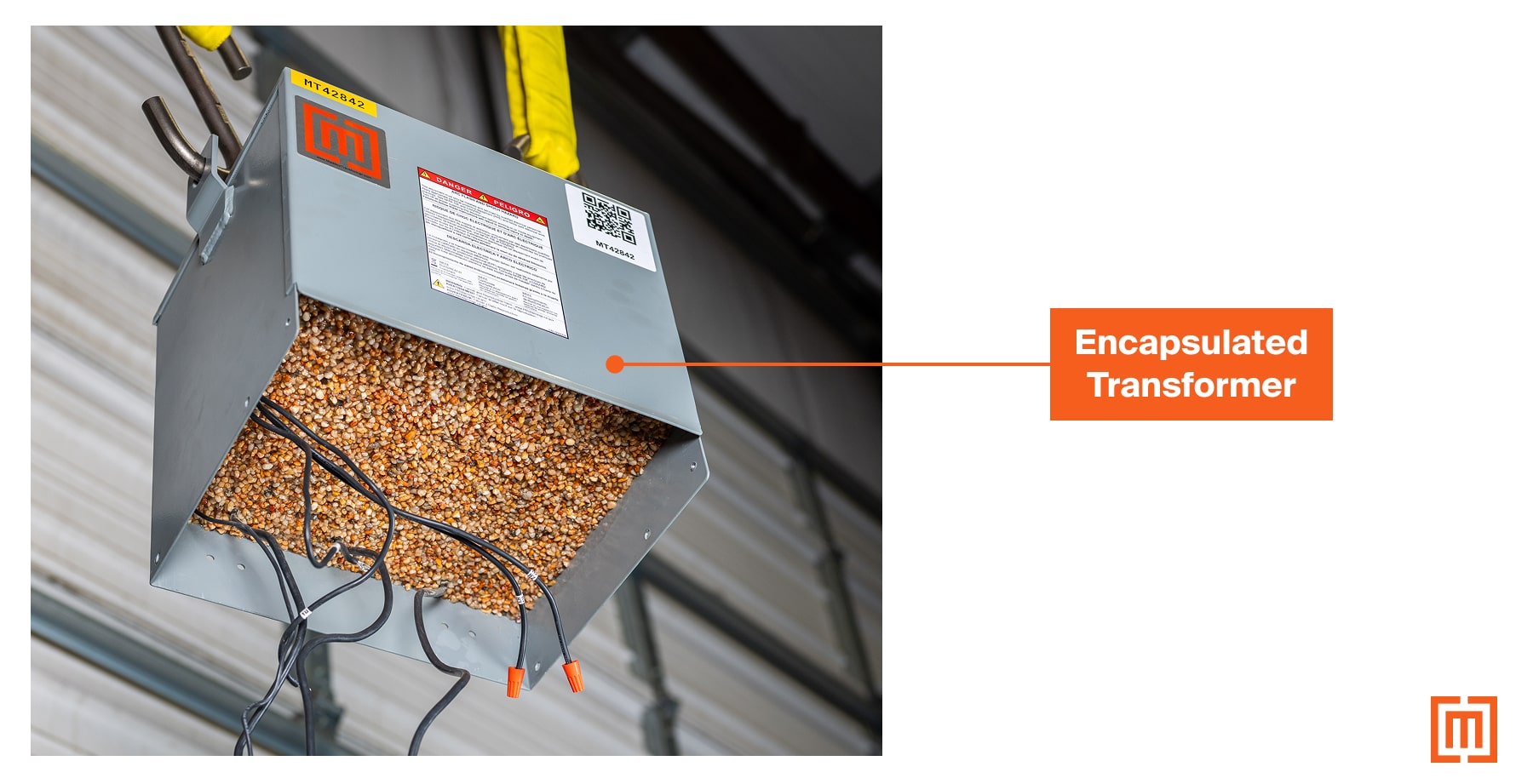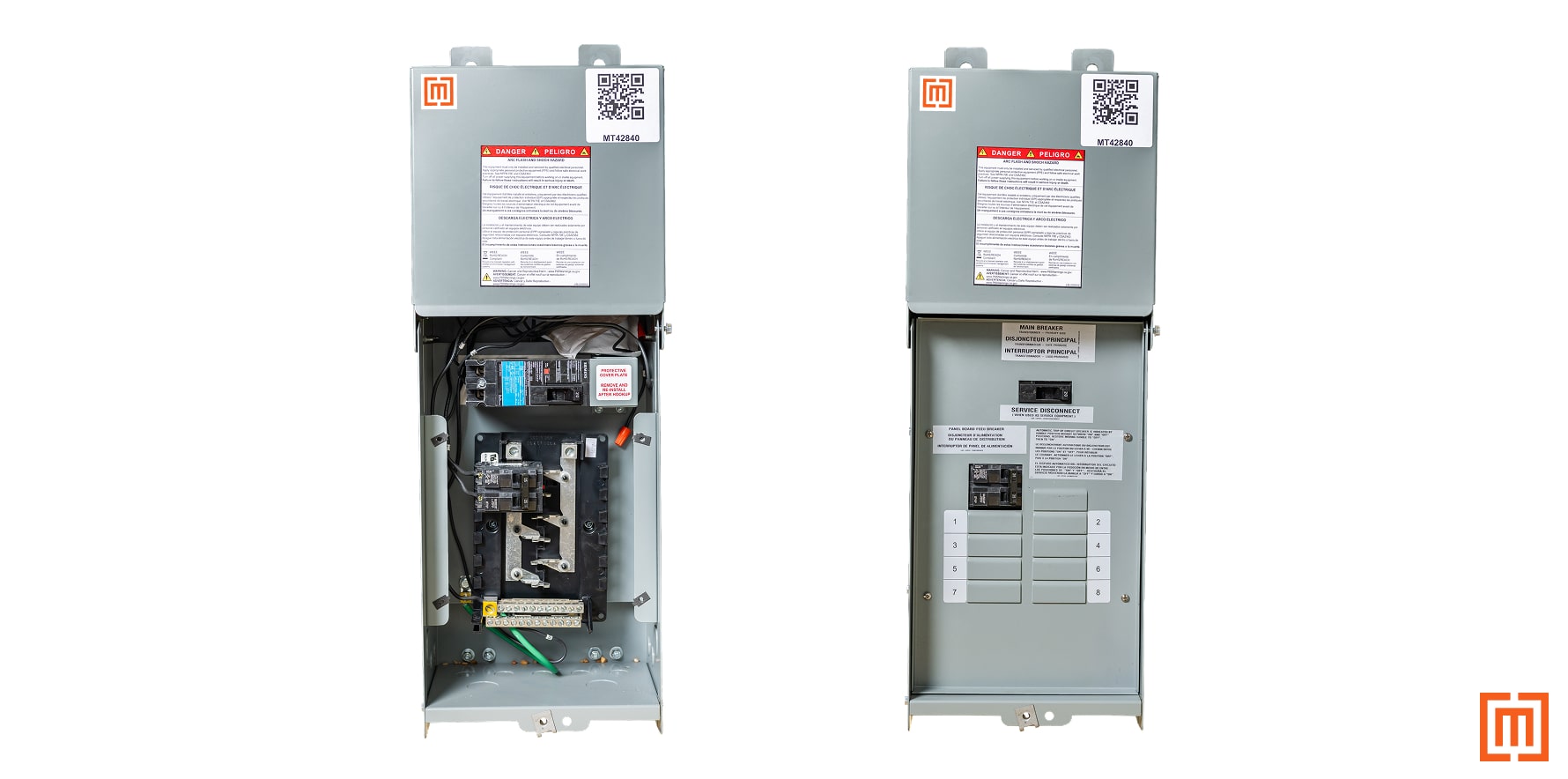What Is a Mini Power Center?
Mini Power Centers combine a transformer, breakers, and panelboard into a single system, providing a compact alternative to standard power distribution.
November 13, 2025
How To's
Most commercial and industrial facilities require several different devices to get power to their loads. A disconnect switch, step-down transformer, and panelboard—each taking up valuable space and adding to installation time and cost.
Mini Power Centers (MPCs) are designed to solve that problem.

What is a Mini Power Center?
A Mini Power Center is a small, self-contained electrical distribution unit. MPCs combine a transformer, breakers, and power panel into a single unit. The result is a localized power source for situations where you need power on a small footprint.
Parts of a Mini Power Center
There are three parts to a mini power center:
- Encapsulated transformer
- Breakers
- Secondary power panel.
All of these parts are contained in a single enclosure. These components are wired together at the factory. The only thing necessary during the install is to make primary and secondary field connections.

Encapsulated Transformer
MPCs typically include an encapsulated transformer to convert 1-phase 480v to 120/240v. Although 480v on the primary side is standard, custom voltages can usually be accommodated. Due to the smaller size of the MPC, the rating of the transformer is limited to around 25 kVA.

Main Breaker
The main breaker protects the transformer from overcurrent and short-circuit conditions on the primary side. It isolates the transformer from the incoming supply if a fault occurs, ensuring safe operation and simplified maintenance.
Secondary Power Panel
The secondary panel of the MPC distributes the stepped-down voltage to the building’s branch circuits. Here the end user can connect up to 30 secondary branch circuit breakers.

Branch Circuit Breaker
A branch circuit breaker protects the transformer and downstream circuits from load-side faults.
For example, if you connected a CNC machine to your MPC, you’d connect a branch circuit breaker to the MPC’s panel. In case of a fault, that breaker would trip, stopping power from flowing through the circuit to your machine.
MPCs typically include two secondary breakers on the panel. End users can supply additional branch circuit breakers as needed.
Panel Wiring
Because the panel is directly wired to the transformer within the enclosure, there’s no need for field conduit between the transformer and distribution panel. This simplifies wiring and ensures short-circuit coordination between breakers and the transformer.
Enclosure
The unit’s enclosure is rated NEMA 3R for indoor or outdoor installation. You can mount the MPC on the wall or on the floor. The panel is padlockable to prevent unauthorized access.
Why Choose a Mini Power Center?
Why not just use a regular encapsulated transformer and breaker setup? The main advantage of an MPC is its small footprint. If you don’t have the space for a traditional transformer + breaker + panel setup, an MPC is a great option. MPCs reduce your labor and material cost while also reducing the equipment footprint and wiring.
Common Applications
Mini Power Centers are used across a wide range of settings, including:
- Solar projects
- Temporary power applications
- Data centers
- Other commercial sites

It’s important to remember that MPC’s are typically on the smaller end. They’re exclusively used on low-voltage distribution systems and loads requiring 120/240v 1-phase. Projects demanding greater load capacity will need larger transformers and a separate panel and breaker setup.
Is a Mini Power Center Right for You?
Mini Power Centers offer a simple, space-efficient way to deliver localized power. If your application requires a compact solution that combines a transformer, panelboard, and breakers into one package, an MPC may be the perfect fit.
If you’re wondering whether an MPC is right for you, fill out the form below. Or, Shop our stock of mini power centers on our webstore – we’ll deliver it to you in 3–5 business days.












